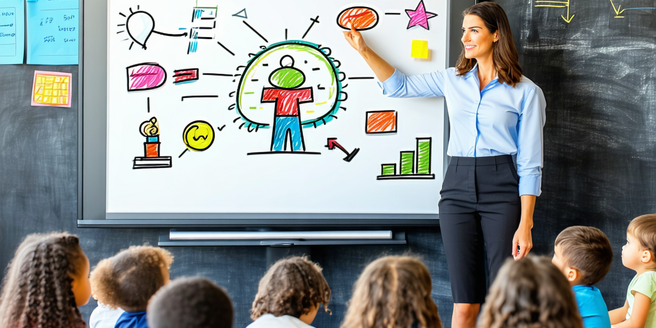
Understanding Different Learning Styles
In language education, understanding different learning styles is crucial for effective teaching. Learners may have various preferences, such as visual, auditory, reading/writing, or kinesthetic styles. By recognizing these differences, educators can tailor their teaching methods to better suit each student’s needs. For instance, visual learners benefit from diagrams and charts, while auditory learners thrive with lectures and discussions. Implementing diverse instructional strategies enhances student engagement and facilitates learning by making the content more accessible. Teachers can use surveys or observations to identify individual learning styles and integrate activities accordingly, ensuring every student has the opportunity to succeed. Being adaptable in teaching approaches not only aids retention but also promotes an inclusive classroom environment that respects and values diversity in learning preferences.
Designing an Engaging Curriculum
Creating an engaging curriculum involves developing lessons that capture students’ interest and motivate them to actively participate in their learning. To achieve this, educators should incorporate a variety of activities that cater to different learning styles and interests. By employing diverse teaching methods, teachers can create a dynamic environment that keeps students focused and excited to learn. A balanced curriculum includes a mix of theoretical knowledge and practical application exercises, enhanced with interactive and multimedia components. Using real-life scenarios and cultural contexts helps students connect with the language and see its relevance. Teachers can also utilize games, role-playing, and projects to make learning more enjoyable and meaningful. Regular feedback from students is essential to refine and adapt the curriculum, ensuring that it remains engaging and effective over time.
Utilizing Technology in Language Education
Incorporating technology into language education can significantly enhance the learning experience. Digital tools and platforms offer a multitude of resources that cater to diverse learning styles. Online dictionaries, language apps, and educational websites provide interactive and multimedia content that can make learning more engaging. Moreover, these resources can be accessed anytime and anywhere, providing a flexible learning opportunity for students. Virtual reality and augmented reality experiences immerse students in language-rich environments, allowing for practical application. Furthermore, technology enables access to authentic materials, like podcasts and videos, broadening students’ linguistic and cultural exposure. Teachers can use technology for real-time feedback and assessments, facilitating personalized learning pathways. By embracing technological advancements, educators can offer a dynamic and innovative language learning environment.
Encouraging Interactive Participation
Interactive participation is key to effective language learning, as it fosters communication skills and deeper understanding. Encouraging students to actively engage in class discussions, group activities, and peer-to-peer interactions helps build confidence and fluency. Techniques such as think-pair-share, debates, and collaborative projects stimulate critical thinking and allow students to express their ideas in the target language. Constructive feedback from both peers and teachers is crucial, as it guides learners in improving their language skills. Creating a supportive and inclusive classroom atmosphere where students feel comfortable taking risks is essential for promoting interaction. By valuing each student’s contribution, teachers can inspire a sense of community and mutual respect, which enhances the overall learning experience.
Evaluating and Adapting Teaching Methods
Continuous evaluation and adaptation of teaching methods are vital for effective language instruction. By regularly assessing student progress and soliciting feedback, educators can determine the effectiveness of their teaching strategies. It’s important to recognize when certain approaches aren’t meeting the learning objectives and be willing to make necessary adjustments. Teachers should also engage in professional development to broaden their skills and stay current. This may involve incorporating new techniques or technologies, providing additional resources, or revisiting lesson plans. Reflection on teaching practices and staying informed about educational research enables teachers to implement evidence-based methods. An adaptable mindset ensures that teaching remains responsive to the evolving needs of students, resulting in improved learning outcomes and student satisfaction.
